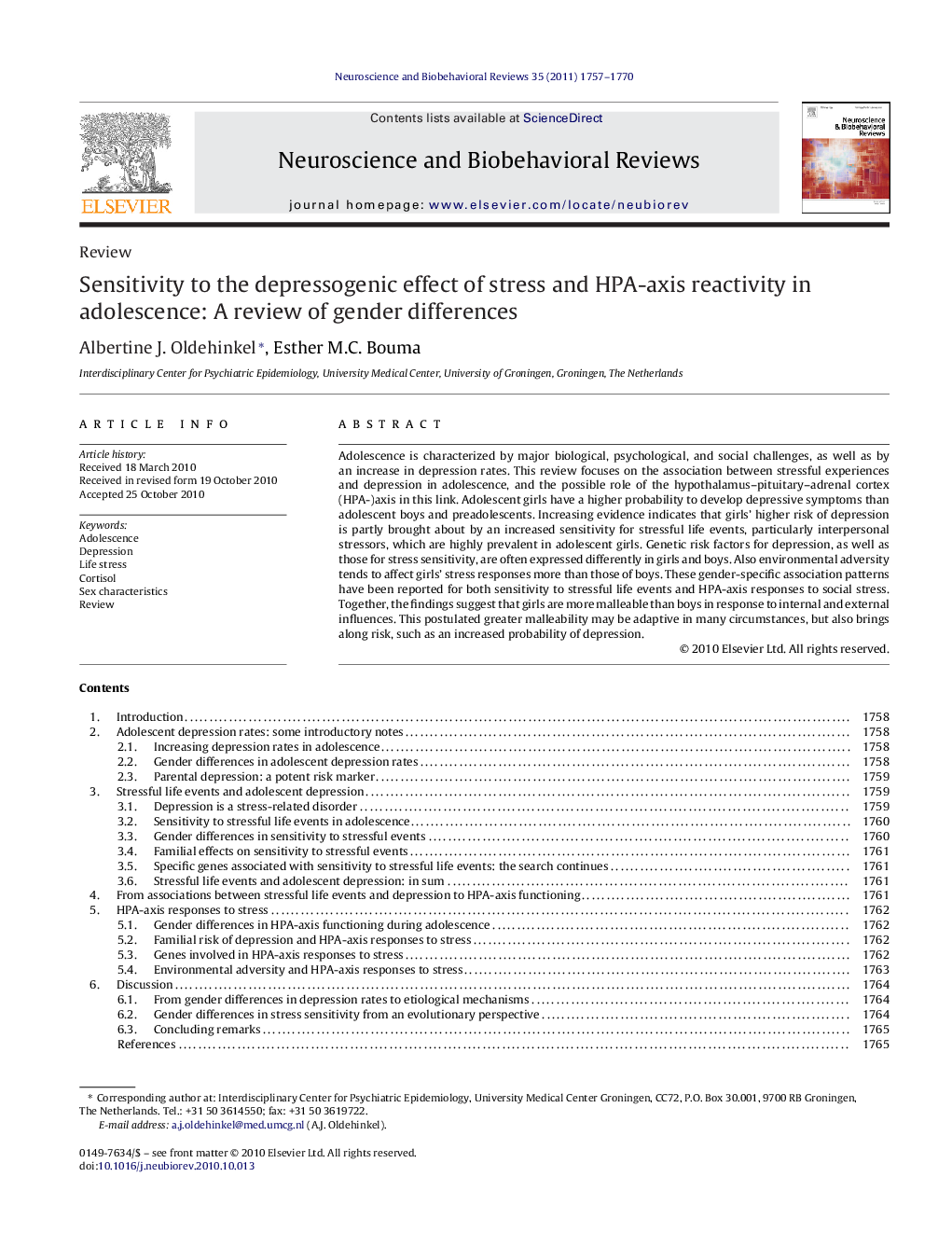| Article ID | Journal | Published Year | Pages | File Type |
|---|---|---|---|---|
| 937653 | Neuroscience & Biobehavioral Reviews | 2011 | 14 Pages |
Adolescence is characterized by major biological, psychological, and social challenges, as well as by an increase in depression rates. This review focuses on the association between stressful experiences and depression in adolescence, and the possible role of the hypothalamus–pituitary–adrenal cortex (HPA-)axis in this link. Adolescent girls have a higher probability to develop depressive symptoms than adolescent boys and preadolescents. Increasing evidence indicates that girls’ higher risk of depression is partly brought about by an increased sensitivity for stressful life events, particularly interpersonal stressors, which are highly prevalent in adolescent girls. Genetic risk factors for depression, as well as those for stress sensitivity, are often expressed differently in girls and boys. Also environmental adversity tends to affect girls’ stress responses more than those of boys. These gender-specific association patterns have been reported for both sensitivity to stressful life events and HPA-axis responses to social stress. Together, the findings suggest that girls are more malleable than boys in response to internal and external influences. This postulated greater malleability may be adaptive in many circumstances, but also brings along risk, such as an increased probability of depression.
